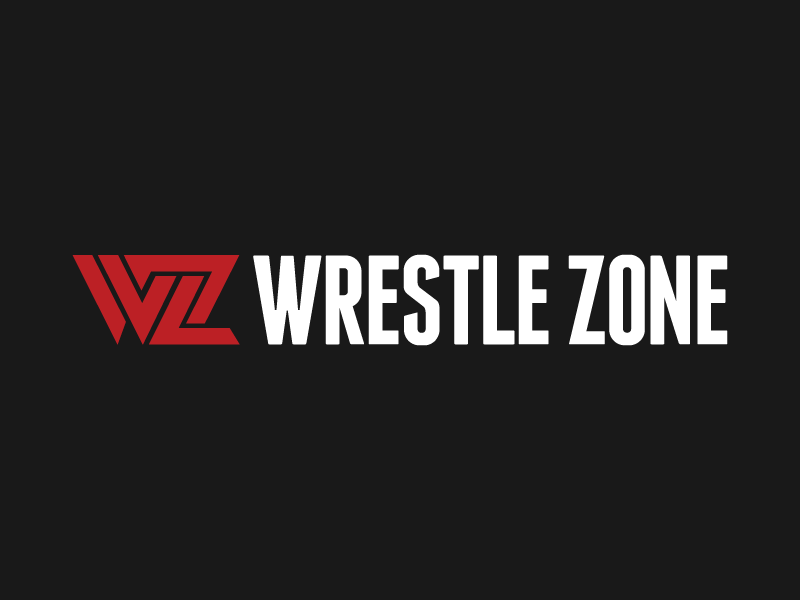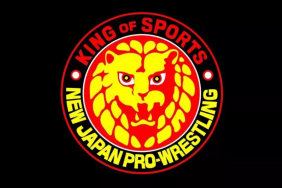Audiences have an unquenchable taste for the future, enthralled in television programs, films and books that provide them with a brief glimpse into what may be in store. Powered by one of the more irresistible human emotions, curiosity, science fiction is a mainstay in the world of entertainment. However, the basis for watching isn’t simply to see what could happen, but as early Star Trek episodes prove, but to see what will happen. Star Trek, films such as Metropolis, and novels like Nineteen Eighty-four, have all, to some degree, predicted what did eventually happen, examples being, computers, teleportation, and artificial intelligence. We me may not see these technological advances as anything extraordinary in our modern jungle of circuitry, but such is the nature of technology, to become so quickly ingrained in our everyday lives that we feel we couldn’t live without it. No other hi-tech introduction has achieved this more successfully than the Internet.
The ‘World Wide Web’ was officially released in 1992, a mystifying entity with unlimited potential, news reports from the time felt that this potential would simply expand the trading horizons of business. How wrong they were. The Internet has essentially become a second earth, a place detached and independent from physical life, there are populations, clubs, occupations, and everything the ‘real’ world has. It’s introduction and exponential expansion has left no facet of the world untouched by its influence, including professional wrestling. Especially professional wrestling.
Being a sport that everyone can access and enjoy, as well as the now common knowledge that the matches and their outcomes are on the whole, preconceived, professional wrestling is the perfect platform for the masses of viewers to donate their two cents and have their say on what they feel should be happening. And so, professional wrestling related websites began to appear daily since, not yet have they satisfied the hunger of the Internet fans, and they probably never will. Each providing the fans with behind the scenes news, commentary, and a forum for which viewers can share and reflect on their feelings towards professional wrestling in general or specific. Over time, the network of sites started to blend, acknowledging one another’s presences, becoming a society of sorts, and thus it became the Internet Wrestling Community.
With this unity came power, the magnitude of fans and their opinions have changed professional wrestling more than the previous decades of change combined. Be it, the booking of the shows, the character dynamics of the products, or the newfound self-awareness of the fans, there’s no argument that the Internet has indirectly altered the course of professional wrestling forever.
The most notable consequence of the Internet has been the fans becoming aware of their role in the workings of the product. By drawing the viewers together, the Internet has allowed the casual fan to be elevated to an expert through the shared knowledge of the whole community, and thus the fan base have since gained a greater amount of awareness of how they fit into the equation. A few moments within the community will reveal that like all communities, there is segregation within the society itself, various sub-groups of fans are referred to as ‘marks’, and ‘smarks’, each alias representing a level of awareness in the great food chain of the Internet Wrestling Community.
‘Mark’ refers to the lowest level of the food chain, referring to a fan who isn’t fully aware that the sport operates under ‘kayfabe’, and blindly follows and supports whatever is presented before them by the company. Meaning that a ‘mark’ cheers for whoever is a face, and berates all the heels, regardless of personal preference. ‘Marks’ are easily recognised in a live audience, they are the people waving the signs that simply have a performer’s name, ‘[name of face] rules’, or generally a sign that echoes the basic ‘in-jokes’ from the current angles. The term ‘mark’ is derived the early days of professional wrestling in carnivals, where naïve fans were seen as marks ready for grifting. ‘Mark’ is generally used as a demeaning term, for fans who don’t have a mind of their own and are inferior to ‘smarks’.
‘Smarks’, in reference to ‘smart’ ‘marks’, are generally the inhabitants of the Internet Wrestling Community, fans that are aware that wrestling is storyline driven and choreographed. As a group, ‘smarks’ are outspoken and defiant, going out of their way to do the opposite of what the company wants the fans to do, i.e. cheering the heels, rebelling as an audience at televised shows, much to the annoyance of the producers. Often wielding witty signs that denounce talent, criticize the product, and subvert the expected norm, and chanting calls that reference behind-the-scenes goings-on, condemn the current match, or simply aim to ‘hijack’ a segment not endorsed by the ‘smark’ community. Arenas and states of the U.S.A. have become renowned for smark behaviour, such as New York, Philadelphia and Canada, places where promotions now modify their shows to cope with the expected smark contingent. Other than being opinionated, ‘smarks’ are also renowned for having ‘favourites’, wrestlers that the community as a whole clings to, generally and a small-framed underdog or underpushed star, which they support religiously regardless of appearance or performance in the federation. Conversely, ‘smarks’ have a set list of stars that they berate blindly despite their talent or prominence; these athletes are normally the top billing stars of the promotion that are chosen as targets because of either backstage traits or a too hasty rise to fame. ‘Smarks’ see themselves as superior to ‘marks’ and the promotions, which they feel try to deceive them through kayfabe, in turn ‘Smarks’ are seen as the intellectual mavericks, products of jaded wrestling fans who have grown up and have no love for the new generation of stars.
As the Internet divided fans, the segregation has spilt over to live events, as mentioned previously. The ‘marks’ of the audience go about business as expected, continuing to applaud the heroes of the company, and get personally offended by the heels, The environment remaining similar to the golden era of wrestling circa the 1980s, kayfabe an ignored element of the product. On the other, the ‘smark’ contingents of audiences are hell-bent on exposing and disobeying kayfabe as obviously as possible. Favourite techniques in achieving this are chants, signs, the vocal support of heels among others.
The Internet’s awakening of the professional wrestling fan base hasn’t just spread to the interaction between fans, but as the said fans accumulated influence in numbers, the effect of their presence has gone far beyond a few uncharacteristic chants on the shows. In fact, professional as a whole has had to modify the way that it constructs storylines and generally interacts with the audience in response to the Internet. The first aspect of the sport that suffered an overhaul was kayfabe, although it had been over a decade since the preconceived nature of the sport had become household knowledge, the audience had tended to retain their suspension of disbelief. However after fans became more aware through the new technology, kayfabe became the nemesis, as it promoted the exact opposite of the newfound awareness. The viewers became more informed through the endless supply of news sites and commentary, meaning that they knew about the behind the scenes mechanics and controversy more than ever before. Kayfabe became a façade covering everything the fans knew was going on but weren’t seeing, in turn the fans protested through any avenue they could, forcing the promotions to adapt.
Promotions have since modified how they do business to cope with the Internet induced awareness in several ways, the most noticeable being the acknowledgement of kayfabe on air. Specifically the acknowledgement that the stars in the ring are in fact actors, and the in ring personas bear no resemblance to the athlete, the opposite of the previous mentality professional wrestling was trying to convey. Links have been created between the fans and the wrestler as a person, such as interviews, Internet programs, and press conferences. Although weakening the charm of the sport somewhat, it eased the outcry of fans that now feel that they aren’t being treated like children any longer.
Promotions have also succumbed to the ‘if you can’t beat ’em, join ’em’ mentality. Only recently have Internet fans seen the companies beginning to acknowledge their existence. Although this move further broke down the fourth wall between the fans and the characters, it has diffused a portion of the Internet Wrestling Community’s appeal, its ‘underground’ movement status. The Internets effect on the sport has been vocalized in different scenarios over its only brief existence. In smaller promotions, vendettas brewed in professional wrestling message boards, are played upon and brought to life in the ring, the implication being that the storylines are already developed, and the line between face and heel have already been drawn by the fans themselves. The larger promotions use Internet controversy to enhance storylines, for instance, if reports of backstage rivalry or sparring inundate the news boards, the promotion may intentionally create a feud between the two, or in some cases, reference said backstage controversy. Also, as the Internet Wrestling Community often clings to cult figures or organisations, major promotions have begun satisfying the nostalgic demand of the internet, desires not necessarily shared by the ‘mark’ population who are the chief demographic the product is aimed at.
The Internet revolution isn’t all good news for everyone though, the professional wrestlers themselves, generally the more vintage stars, have spoken out against the new Internets influence on professional wrestling. Ric Flair, specifically protested against the use of ‘inside’ terminology, i.e. heel, face, etc, by people not within the business itself. The reason being that the distance between fans and the business has always been at arms length, until the Internet provided everyone with a window in to the business and an opinion. Other stars, such as The Undertaker and Triple H have criticized the fans now having the awareness to construct their opinion of the business and having the confidence to voice what they believe the promotion is doing incorrectly, some fans having harsh words to say about individuals. This means that men who are essentially at work, are at will of fans who have no direct connection with the business, probably the primary reason the internet isn’t seen in a holy light by some professional wrestlers.
The bad light that the Internet Wrestling Community is seen in by these professionals is a product of the demographics within the community itself, generally a young male audience with little to no experience in the field. As with most occupations, employees would not look positively on an outsider with no affiliation to the business, criticizing how they poorly they are doing their job.
Alternatively, the Internet has benefited other performers. ‘Smark darlings’, or underdogs the Internet Wrestling Community follow religiously, are given great exposure and interest in their abilities despite their low ranking in the pecking order. Such stars would have previously gone unnoticed. There’s no definite reason why certain stars are chosen to be the favourites of the smarks, but generally it’s due to it being subversive to follow and support a star who causes barely a ripple in the promotion. Similar level stars would have been overshadowed by the dominant stars of the promotion, in the years preceding the involvement of Internet in professional wrestling.
It’s argued that the Internet has had a detrimental effect on the way wrestling is watched. The Internet providing an outlet for nitpicking making it easy for previously ‘mark’ fans to get caught in the whirlwind of outspoken forum members. Once a viewer has entered into the community, it is difficult for them to watch professional wrestling the same way again, aware of the ramifications that a certain occurrence in the product may have on other stars or the promotion as a whole. The suspension of disbelief slowly dilutes as the viewer shifts from fan to critic, taking away the charm and childhood innocence that it would otherwise have been viewed with. The enjoyment replaced with skepticism.
The other side of the coin suggests that the Internet has moved wrestling into the new century, reflecting the awareness not only of the wrestling audience but the world as a whole. The Internet has simply accelerated what would have occurred anyway, it’s foolish to think that as the world becomes increasingly questioning of the media, that the most blatant of facades would remain, unchallenged. In addition, there’s no evidence to suggest that these opinions didn’t exist prior to the Internet, and that they are only being noted now because the fans have been provided with a voice. By allowing fans to express their concerns and praises, and the promotion decides to listen, they then technically have a direct interaction with the fans and what they could be doing better to satisfy the fans.
Regardless of whether beneficial or not, the effect that the Internet has had on professional wrestling as a whole cannot be understated, it has created a direct link between the audience and the performance. Never before have fans felt so in touch with the action, in some cases influences what occurs in the ring. Although the Internet Wrestling Community has moments of widespread condemnation, on the whole, the goal is rather innocent. Fans talking about the sport they love, with other fans that love the sport just as much. If this is the only positive feature that has come from Internet revolution, then it has forever made professional wrestling a much better product for the current audience, and the fans to come.
If you have any questions or feedback my email address is [email protected].
Over and Out
The Butcher








